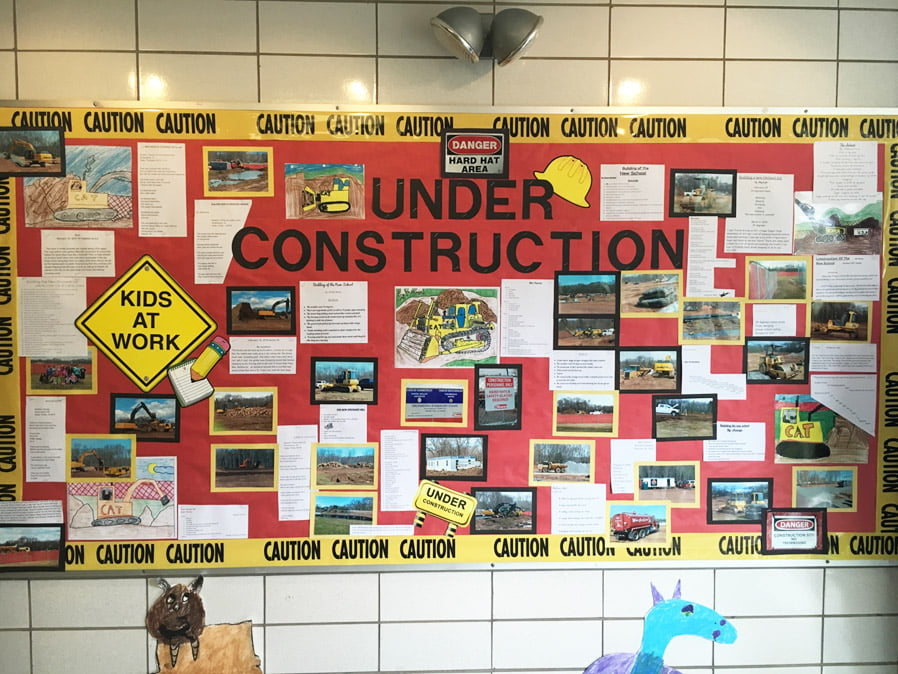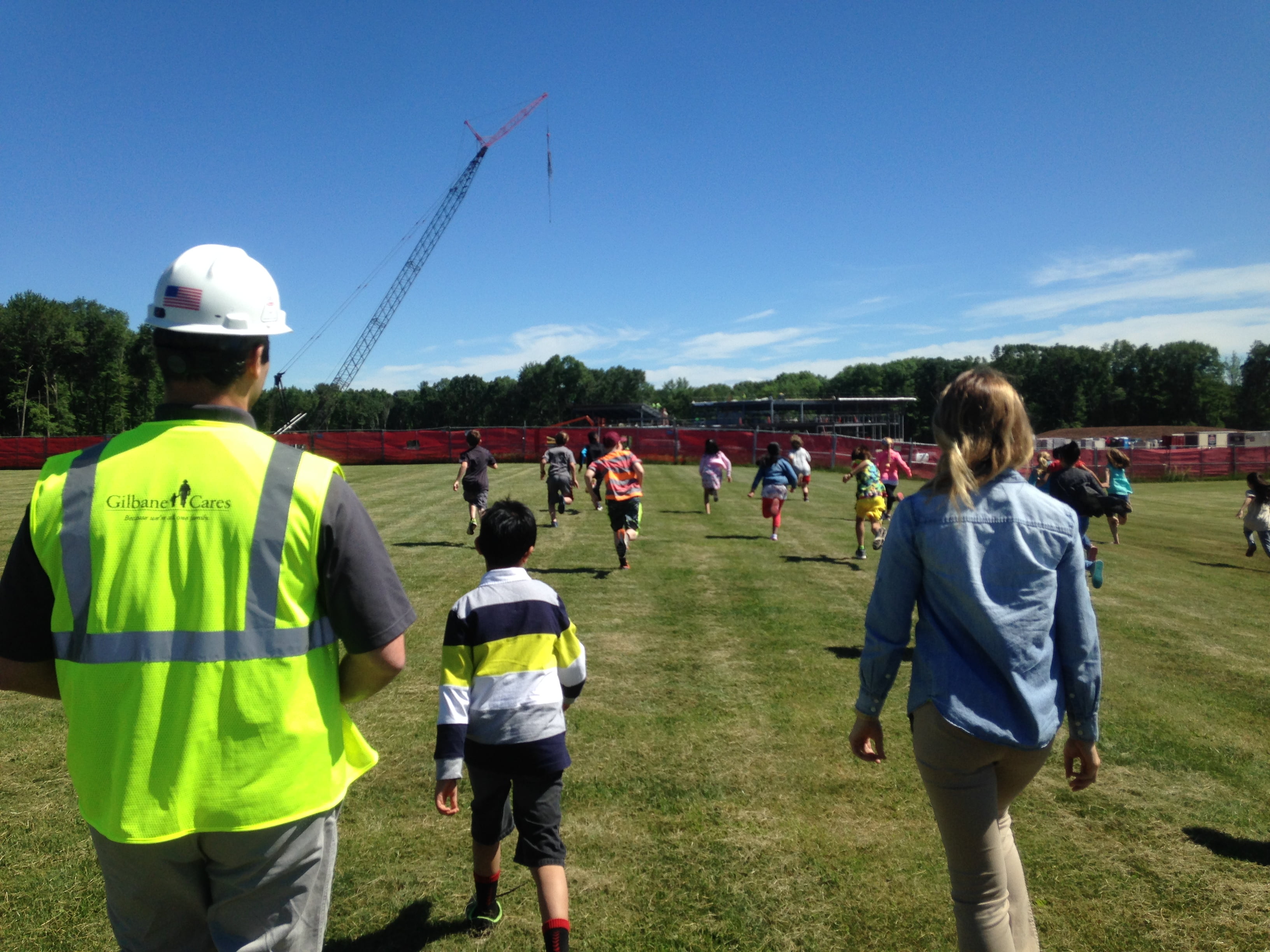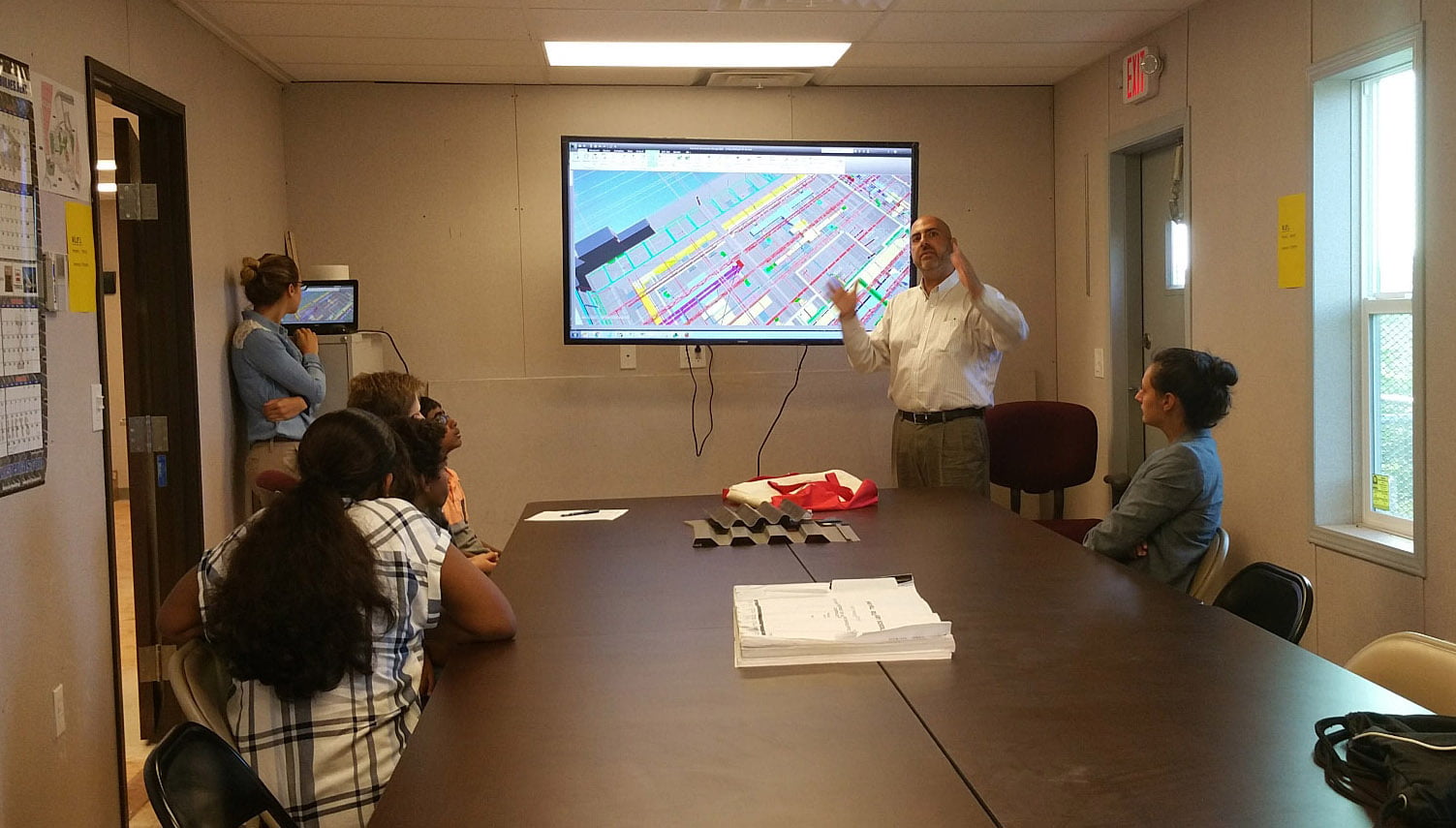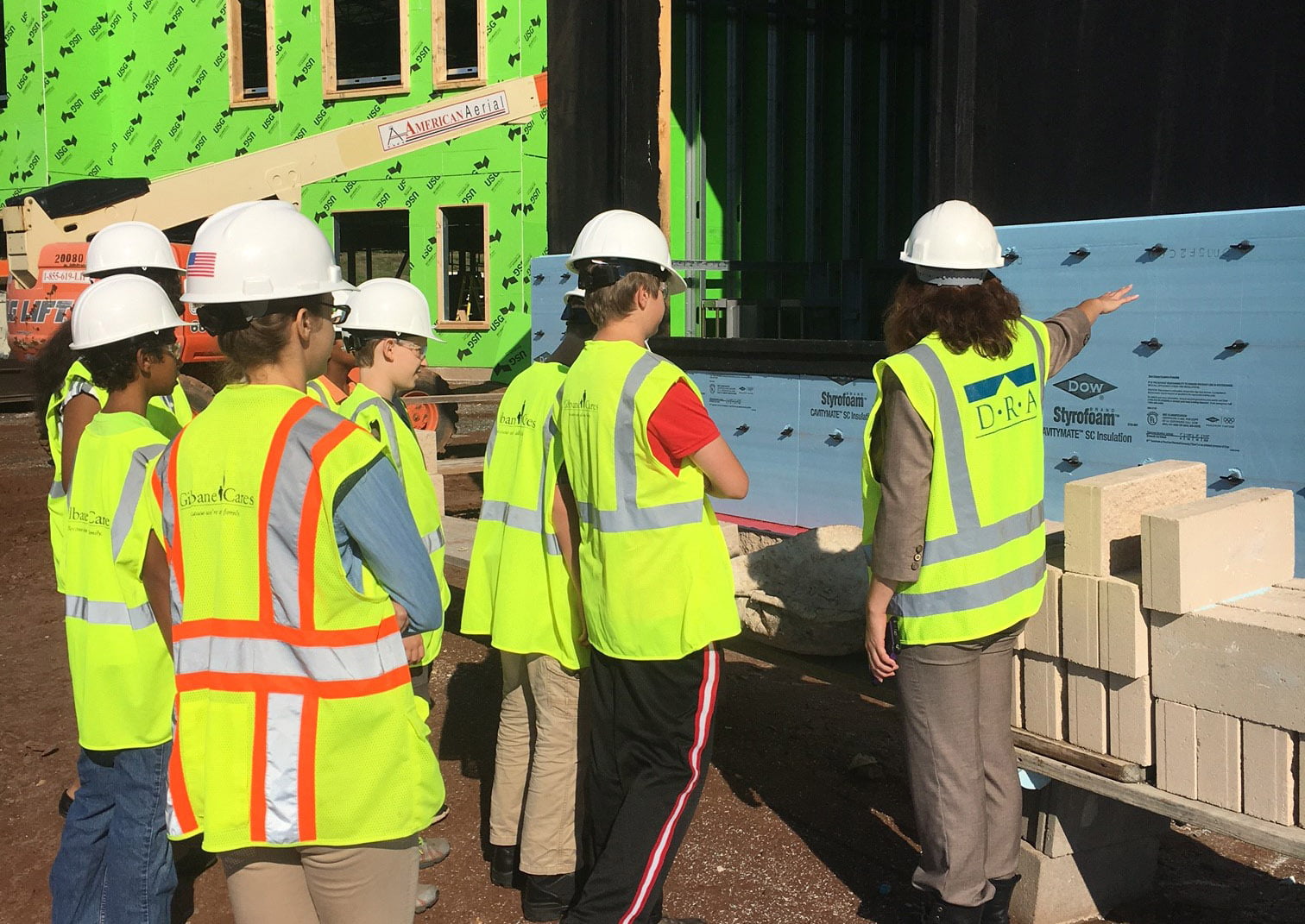Engaging Children in Design and Construction
“How long does it take to draw the building?” “Where will the bus drop me off?” “Why is there a ramp?” These are just a few of the many questions that children are asking in the Design & Construction Mentoring Program at the Orchard Hill Elementary School. The program, developed by DRA Architects and Gilbane Building Company, is proving to be a big success with several schools in South Windsor, Connecticut.
The goal of the program is to get kids interested and informed about opportunities in the design & construction industry. The mentoring program also gets the community excited for projects happening in their town. DRA had proposed the program to the superintendent based on a similar program done by their project manager with Gilbane a few years ago. The superintendent facilitated communication with the school principals in town. The kids love the mentoring, and in turn, the parents and the community become engaged and involved as well.

At the Orchard Hill Elementary School, the children see the construction going on through special viewing holes Gilbane cut out in the fence fabric and they learn what architects and construction workers do. They learn about drawings, and how buildings are designed and built. In one fourth grade classroom, the teacher encouraged the children to write poems and to create artwork about the construction. A display at the school’s main entrance was created for their artwork and poems and they added caution tape around it for a decoration. Those same students keep notes as the construction project progresses, including what they saw on the site, the weather report, and who was onsite and why. When DRA and Gilbane pay visits to their classroom, the kids have dozens of questions ready for them about what architects and contractors do.

At the Timothy Edwards Middle School, the sixth, seventh, and eighth grade students have a more structured program. The groups of students come to Gilbane’s job trailer several times and learn about different phases of design and construction from Gilbane and DRA’s project team members. They learn about site work, building design, structural design, building envelope, mechanical systems, electrical systems, how walls are built, and about the finishes. They get to see the drawings and learn how to read them. They get to see samples of materials, and touch the materials on site during the site walks. They get to see the inside parts of the construction that will later be covered up, never to be seen again. And they learn how many of their classes, such as math, science, art, and technology, will be useful to them in the future.

At South Windsor High School, the principal thought it would be great if a select few juniors and seniors could focus on the construction process by having their senior project developed out of site visits and personal mentoring sessions with DRA and Gilbane. Their research could turn out to be a documentation project, a design project, or a project about the design & construction industry professions. After listening to a project meeting just one time, the students were engaged. They were shown 3D models and renderings of the new school, they inspected the project drawings, interviewed the architect and construction manager, and they walked the construction site. The high schoolers are excited to come back to continue their research.
At all of the schools, students learned about the importance of safety on and around the job site, and they were required to wear protective gear whenever they visited the construction site and they were always accompanied by project team members.

Design and Construction is the second is largest employer in the US after healthcare or according to the Brookings Institute. There is a tremendous amount of job opportunities available now and will continue to be in the future. The Board of Education was thrilled with the program after DRA gave a presentation about the first few mentor sessions. Discussion at the board meeting expanded into how the students would also learn about business skills and teamwork. One board of education member complemented the superintendent and DRA saying “Well, we certainly have the right team on the job”.
So why would DRA and Gilbane put effort into a mentoring program like this? Well, since we will need employees in this industry in the future, it helps everyone in the community to get the information out to the kids, so they can see what choices there are, and how exciting our jobs can be. As far as the effort, this goes in the category of putting in a minimum effort to get the maximum results.
